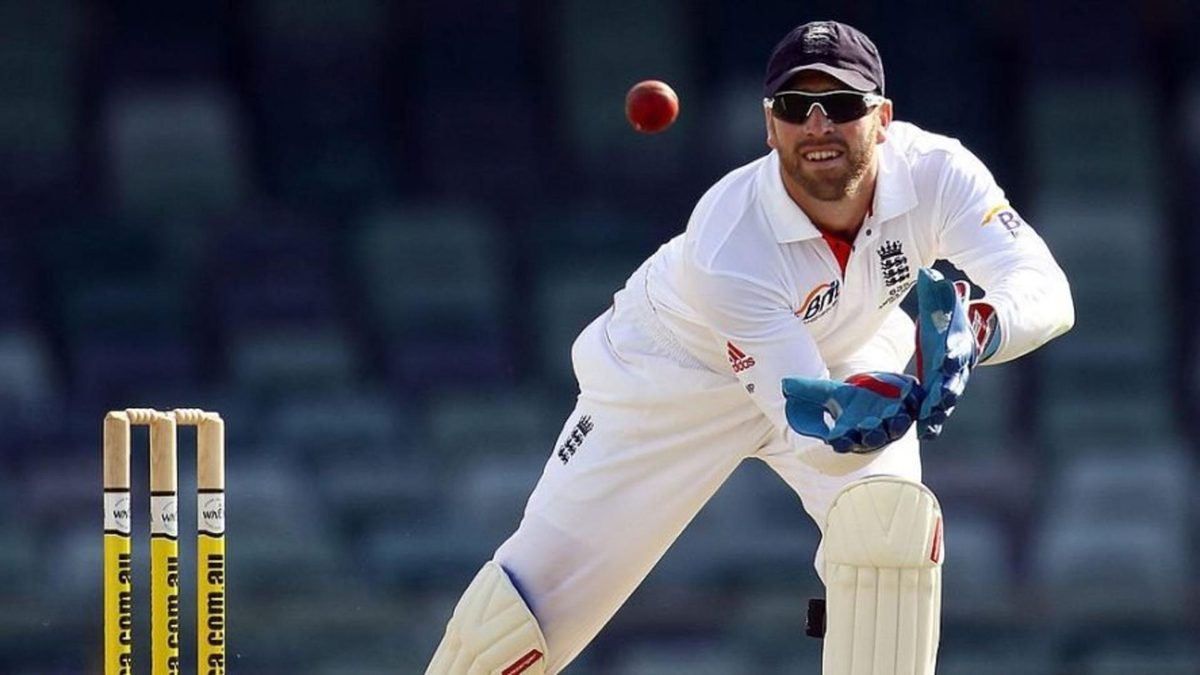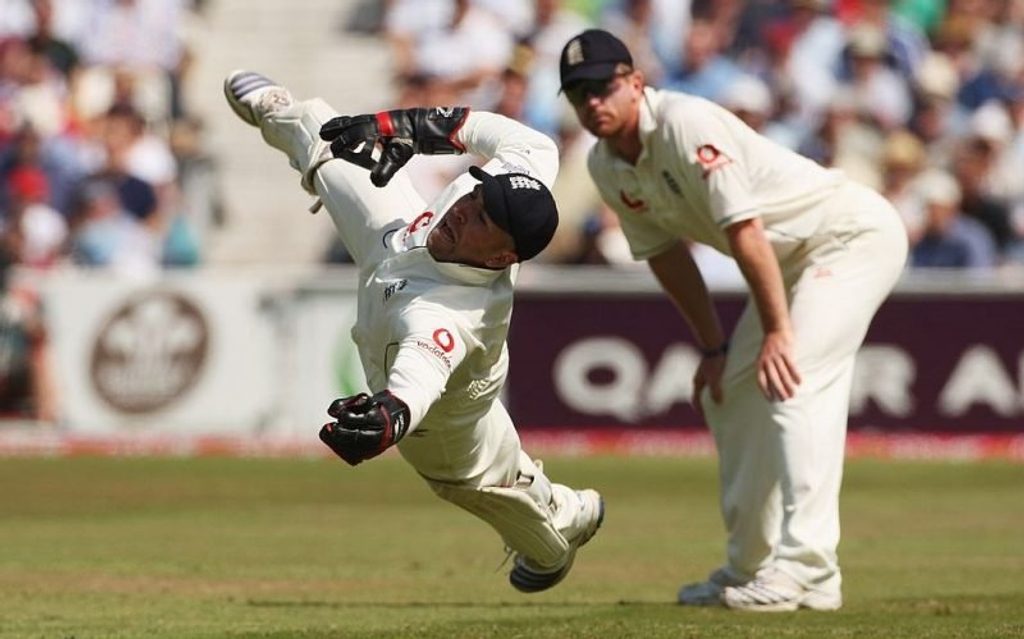
Matt Prior, England’s second most prolific wicketkeeper in Tests, shares his top tips for getting your glovework in good shape.
First published in 2011
First published in 2011
Back to basics
“The most important thing is to keep things as simple as possible. The minute you try and complicate your technique or worry about looking good it becomes very difficult to be consistent. You’ve got to be comfortable with a simple, repeatable method.”
Face front
“One thing I work on is keeping very square on to the ball. What I mean by this is that I want my head and my shoulders to point straight down the wicket. I’m not one to set up towards mid-off or mid-on, because I want to keep my head very still and give my eyes a full view of the ball. If you don’t do this, you can end up with a situation similar to a batsman not having his eyes level in his stance. This can affect your balance, stop you from picking up the ball early and, ultimately, reduce your chances of taking a clean catch.”
Stay in line
“At the moment that your gloves close, make sure that the ball, your head and your hands are all in line. When you’ve caught the ball you can do what you want – there’s the Aussie style of taking the ball on your inside hip or the more English style of taking it out in front you – but this basic alignment gives you the best chance of catching it in the first place.”
 Matt Prior affected 256 dismissals from 79 Tests, which is the second best for England after Alan Knott’s 269
Matt Prior affected 256 dismissals from 79 Tests, which is the second best for England after Alan Knott’s 269
Your level’s best
“The height at which you try take the ball is very much a matter of preference. Alan Knott used to like to take the ball around his knees, whereas I’m more comfortable taking the ball a little higher, just below my hip. More importantly, you a) need to make sure the ball is definitely going to carry and b) that if the bowler bends his back, that you’re comfortable taking the ball on the rise with reverse hands.”
No mean feet
“One of the most important things, particularly when standing back, is getting your feet moving. An extra step before you take off can make the difference between reaching a thick edge or not. To this end, you need to make sure you’re not sat too low in your crouch or you will find it very difficult to get going as you come up.”
Avoid the rush
“When you see the ball heading down the leg side it’s easy to panic, but you’re actually looking to move as late as possible. You want to identify the line of the ball early, but by moving late you ensure that you don’t commit yourself before you’ve had the chance to see whether the ball is going to swing. Of course, for this approach to work your footwork needs to be decent, or you’re not going to get there in time.
“Don’t stand too wide. You need a clear view of the bowler’s arm at all times, but I don’t like to stand too wide because what tends to happen is that your left foot ends up stepping in because you naturally want to line up the ball. In this scenario, if there’s an edge, your weight’s on the wrong foot and you’ll do well to recover.”
If it feels good, do it
“It might sound obvious, but it’s important to do things your way. There are certain fundamental principles that most people follow, but as long as you catch everything that comes your way, no one will care what you look like.”
Do the drill …
As Matt says, one small step can be the difference between a dismissal and a drop. And it’s small steps that are the key. Start with too wide a base or too big a sidestep and you’re unlikely to be able to produce an explosive dive should it be required.
To practise the short, sharp ‘crabbing’ position that’s required when standing up to the stumps, or the slightly straighter-backed movement needed when stood back, set up two cones, five metres apart, and get a team-mate to under-arm catches as you move from one to the other and back again.
This simple drill will help you work out the most efficient way to cover the ground. When you can comfortably take the ball in this fashion, get the feeder to speed up and gradually increase the distance between the cones until you are required to dive to take the ball if it is thrown at either cone. Don’t be tempted to dive until the very last moment – the aim is to maintain a smooth side-stepping motion until you absolutely have to take off.








